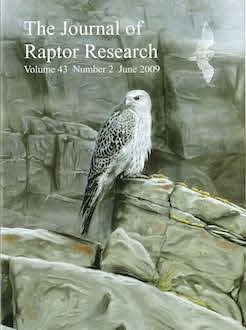During 1987–89, we placed VHF transmitters and colored identification bands on 15 nestling Bald Eagles (Haliaeetus leucocephalus) in central Arizona to determine the direction and extent of their post-fledging migration. Thirteen of the juveniles fledged successfully, and one transmitter failed; 11 eagles survived the post-fledging, premigration period which ranged from 18 to 65 d (mean = 44 d). One eagle was lost by trackers after departure, but 10 monitored eagles traveled north from 925 km to 1955 km before stopping for extended periods or until weather prevented further tracking. Habitats varied among stopping locations and included interior reservoirs and lakes, open ranchland, and the Pacific marine coast. Food at inland destinations included spawning fish (cutthroat trout [Salmo clarki]) and fish carrion (common carp [Cyprinus carpio] and white suckers [Catostomus commersoni]). At least nine of 13 fledged juveniles survived ≥1 yr (69%), and a minimum of six (46%) survived to breeding age.
How to translate text using browser tools
1 June 2009
Migration and Survival of Juvenile Bald Eagles from Arizona
W. Grainger Hunt,
Daniel E. Driscoll,
Robert I. Mesta,
John H. Barclay,
Ronald E. Jackman
ACCESS THE FULL ARTICLE

Journal of Raptor Research
Vol. 43 • No. 2
June 2009
Vol. 43 • No. 2
June 2009
Arizona
Bald Eagle
Haliaeetus leucocephalus
migration
movements
survival




